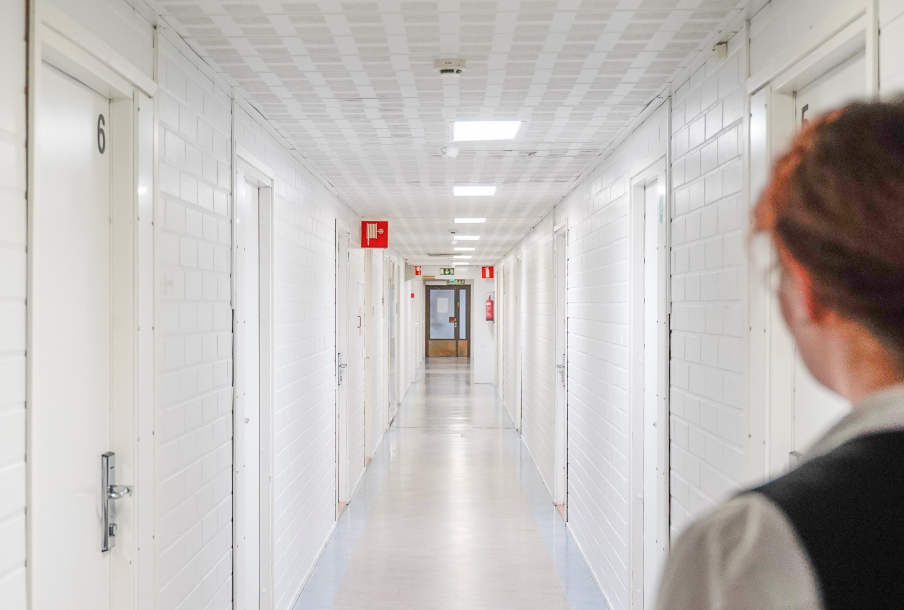When your own car is the only way to get to work– or how to cut down on driving if distance working is not an option.
Sonja Hollanti works in a restaurant and drives long distances to work in her own car. She works end-to-end shifts and sometimes sleeps over at her workplace to cut down on driving.
“And how do you install those metal roofing sheets?”
Sonja Hollanti has pondered construction-related problems like this on her 158 kilometre journeys from her workplace at Härmä Spa to her home in Sievi.
“I’m unusual in that I’ve always liked driving. The more I drive, the faster the journey seems to go by”, Sonja Hollanti says.
It’s a long trip however much time you put to good use planning how to build a log house. In the winter she sets aside 2½ hours each way for the drive.

Over half of PAM members commute to work mostly in their own car. Sonja Hollanti is one of them.
Of those PAM members who commute by car, she is among 58 per cent of members who couldn’t get to work any other way than by car. There is no public transport available in the countryside to suit her unusual working hours.
“Where I live you have to have your own car, otherwise you couldn’t go anywhere.”

Her commute is unusually long for a PAM member. For over half of employees in service sectors, the journey to work is less than 10 kilometres. This is the finding of PAM’s commuting survey based on the responses of 9300 union members last autumn.
For 6 per cent of respondents, their commute is over 50 kilometres.
Sonja Hollanti didn’t use to have such a long journey to work. Her commute changed when her personal circumstances changed. Following her divorce it was important for her to move with her daughter and be close to family and friends.
In many sectors distance working helps to cut down commuting, but it is not compatible with restaurant work. Sonja Hollanti works full-time, and her solution was to ask her employer if she could work end-to-end shifts.
“The alternative would have been to quit this job altogether”, Sonja Hollanti says.
Her employer agreed to the unusual arrangement, and now Sonja Hollanti works at least two shifts in a row without going home in between. At the end of the morning shift at 1 p.m. she might have a nap at work before the evening shift starts at 3 p.m. If I wasn’t a good sleeper I still wouldn’t be able to do this, she can say after three years’ experience.
“I fall asleep as soon as I put my head on the pillow, and I’m well away.”

The log house that Sonja Hollanti built for herself and her daughter is complete. Now as she drives to work she goes through other plans or listens to audio books.
“My journeys to work are my own time. I’m a better mother thanks to this trip”, says the mother of a teenage daughter.
Spending the night at work
Her employer, Härmä Spa, has been flexible on commuting, which has helped to reduce driving at night. Employees who have a night shift followed by a morning shift can sleep over at work for a nominal amount.
On those nights Sonja Hollanti’s journey from her shift to her bed is about 50 metres’ walk down the corridor to a hotel room rather than driving 158 kilometres home.



